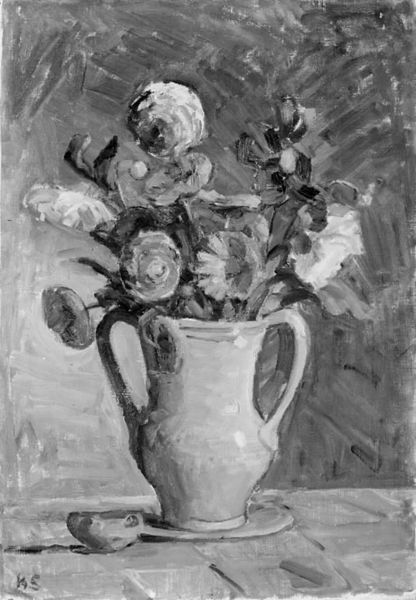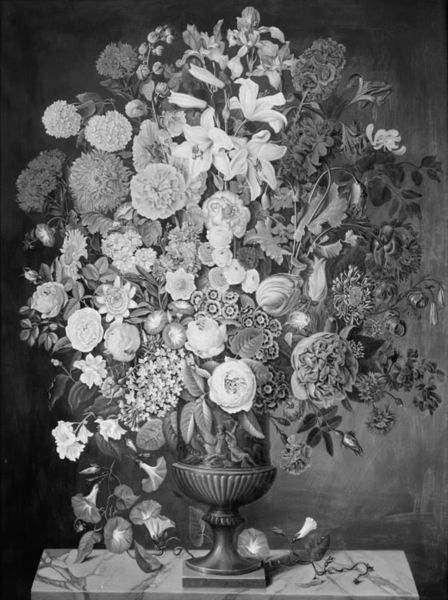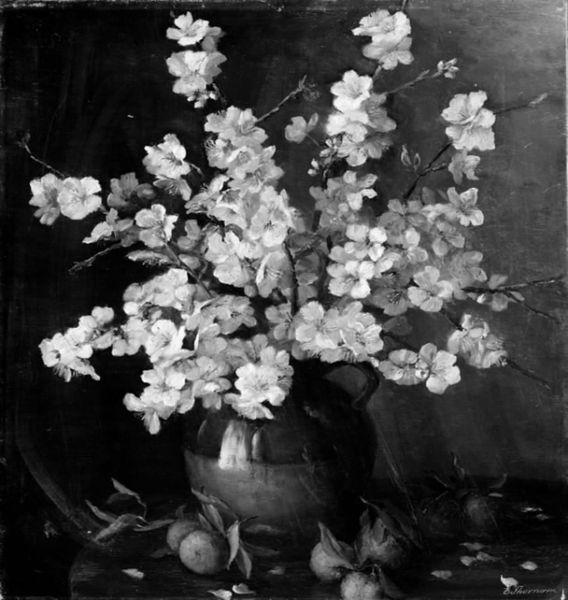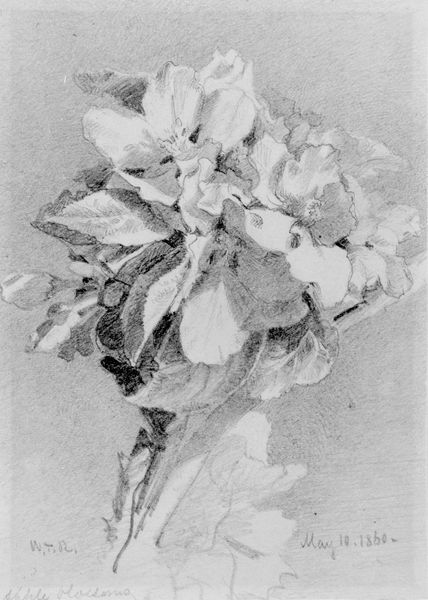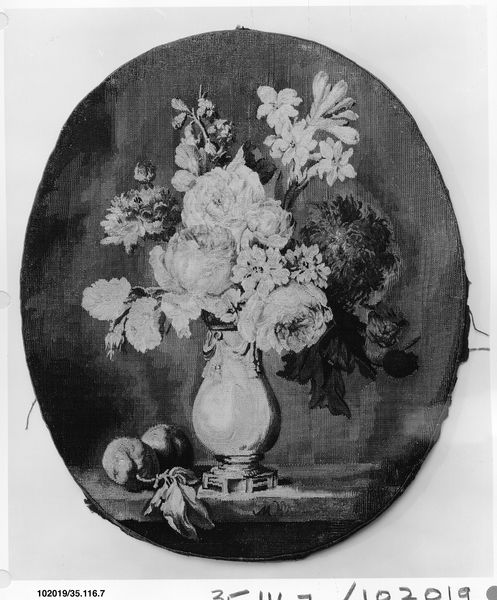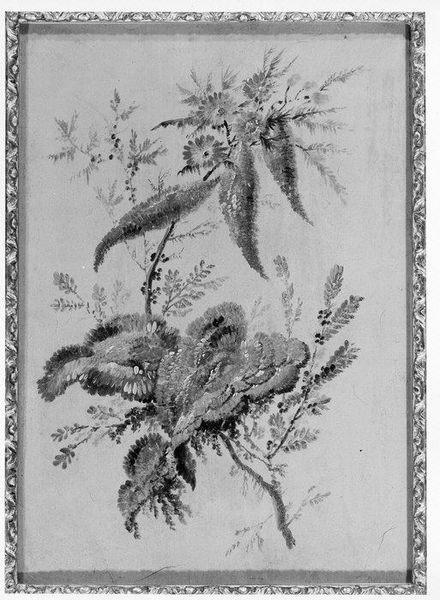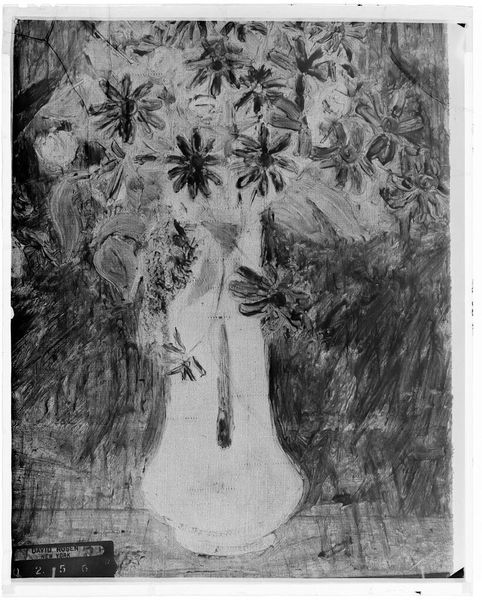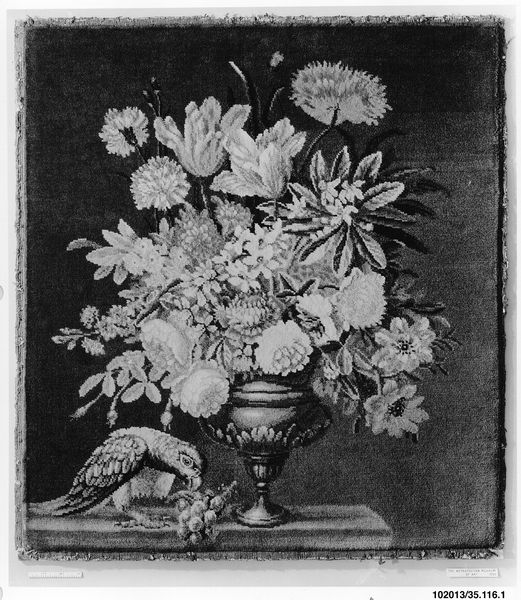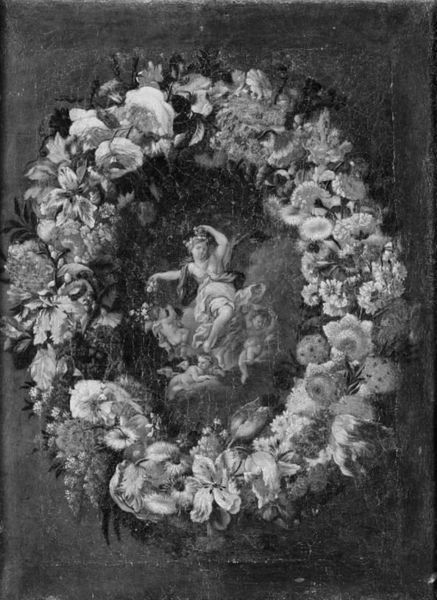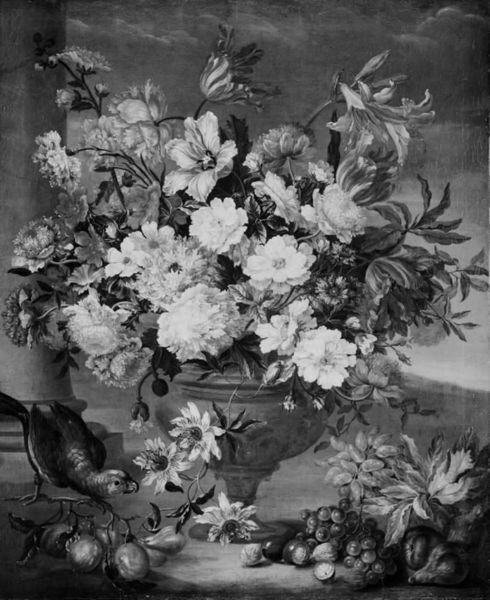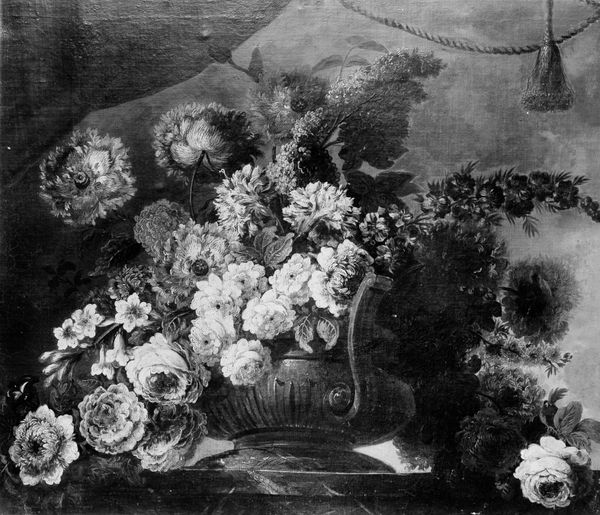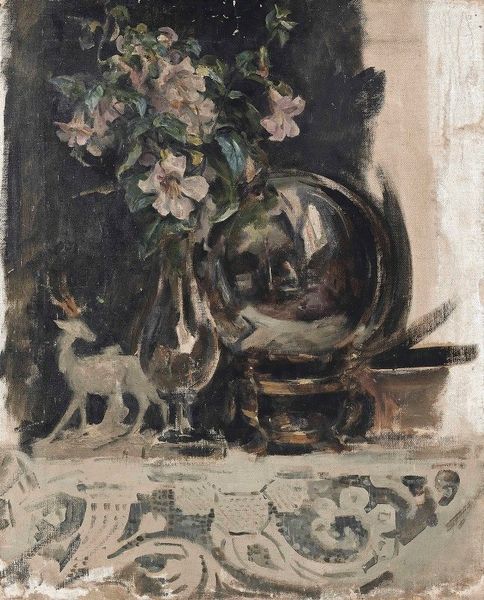
drawing, charcoal
#
drawing
#
charcoal drawing
#
charcoal art
#
black and white theme
#
black and white
#
charcoal
#
monochrome
#
charcoal
#
monochrome
Dimensions: 65 cm (height) x 54 cm (width) (Netto)
Curator: Looking at Maurice Asselin's "Windflowers," a charcoal drawing from 1923 held here at the SMK, I am immediately struck by the tonal range he achieves with what seems a very simple medium. Editor: It feels quite somber for a floral arrangement, doesn't it? The stark contrast between the white blooms and the deeply shadowed vase gives it a melancholic edge, almost a photographic quality. Curator: Indeed, considering its creation between the World Wars, it is important to remember the prevailing climate of reflection and loss that infused art production at that time. How would a stark tonal drawing like this have circulated then? Was it a salon piece or primarily something made for print media, in order to democratize art consumption? Editor: The visible texture of the charcoal—you can almost feel the artist pressing and blending—lends a certain earthiness. There’s no disguising the process; the making is right there on the surface. It asks us to appreciate labor and materiality. Is the paper high quality or of the type more common to rapid sketches? The cost and sourcing may well define audience reach, as the cultural gatekeepers would not want the labor class to view it alongside work done by those of so-called "finer" upbringing. Curator: Interesting thought! One might even consider this monochrome choice not just as aesthetic, but as influenced by the economic constraints of the period and the resources available. It's true charcoal, a readily available medium, allowed for more immediate and perhaps accessible forms of artistic expression outside traditional studio contexts. That certainly reflects on this piece's accessibility in reaching broad audiences. Editor: Absolutely. There is nothing ornate. This aesthetic simplicity draws focus back to material and process. It prompts us to think about how its imagery connects to social conditions and distribution models within art’s historical institutional frames. Curator: So, as you said at the start, more solemn than cheerful perhaps, but, from my point of view, also speaks volumes about its moment and the democratization of image production and its distribution channels during Asselin's career. Editor: For me, this close look highlights that seemingly straightforward artwork embodies significant decisions concerning process, consumption and display that inevitably shape and reflect our cultural values.
Comments
No comments
Be the first to comment and join the conversation on the ultimate creative platform.
